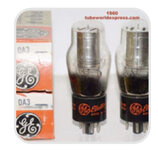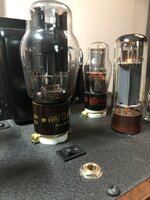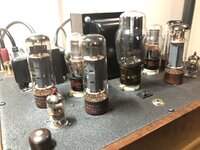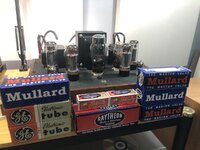scorpio333
Member
To be honest, there's no right or wrong way. What I did was write down all the tubes I had and created a matrix. For each combo I wrote down notes. I want to say it took a few weeks, leaving different combos in for a few days. I started with rectifiers first, nothing scientific just where I decided to start. After settling on certain tubes and thinking I had it right where I wanted things, I rolled different output tubes last week on a whim and WTF how did I miss this! It just never ends! I think it just takes time and patience (not my strong suit) to get to know certain characteristics of the amp and which tube that can maximize areas that are important to you.I think for my own education, I'm going to replace them one type at a time and get an idea what does what. Best route? Or should I throw them all in at once and see what changes overall first and then maybe go back and try other combos? Any advice on what you'd do? Any recommendations as to which to try switching first if doing 1 by 1 is the best idea?
Any advice would be appreciated.
As for the grain at higher volumes, my setup is dead quiet until maybe the last 10% of the volume knob. Rarely do I listen at that level. Before the ZP3 I was using a Jolida JD9 and the noise started just past 1/2 way on the volume. Steve has said and I'm paraphrasing - any issues won't be the amp, but the amp will expose any weakness before it. That bold statement can be interpreted many different ways, however my experience is there is some truth to it. I found changing power cables, interconnects and speaker cable all had an effect and not always a positive effect. You've got great equipment in front of the Torii Jr, perhaps time spent listening will expose what may be causing the grain.



